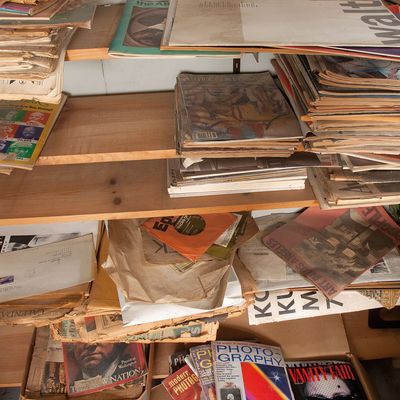
Analia Saban lives and works in a studio with a legendary past. Before she took over the space on Main Street in Santa Monica, it belonged to John Baldessari and, prior to him, William Wegman.
Saban is a conceptual artist who reconfigures traditional media, particularly painting. For example, The Painting Ball (48 Abstract, 42 Landscapes, 23 Still Lives, 11 Portraits, 2 Religious and 1 Nude) (2005) is a 26-inch-wide ball of the enumerated paintings ripped in thin shreds and wound like yarn. For Cotton Canvas Thread from a 7.5 ft-wide Landscape Painting, (2005), a one-eighth-inch-wide strip cut horizontally from a landscape painting was framed and mounted on the wall.
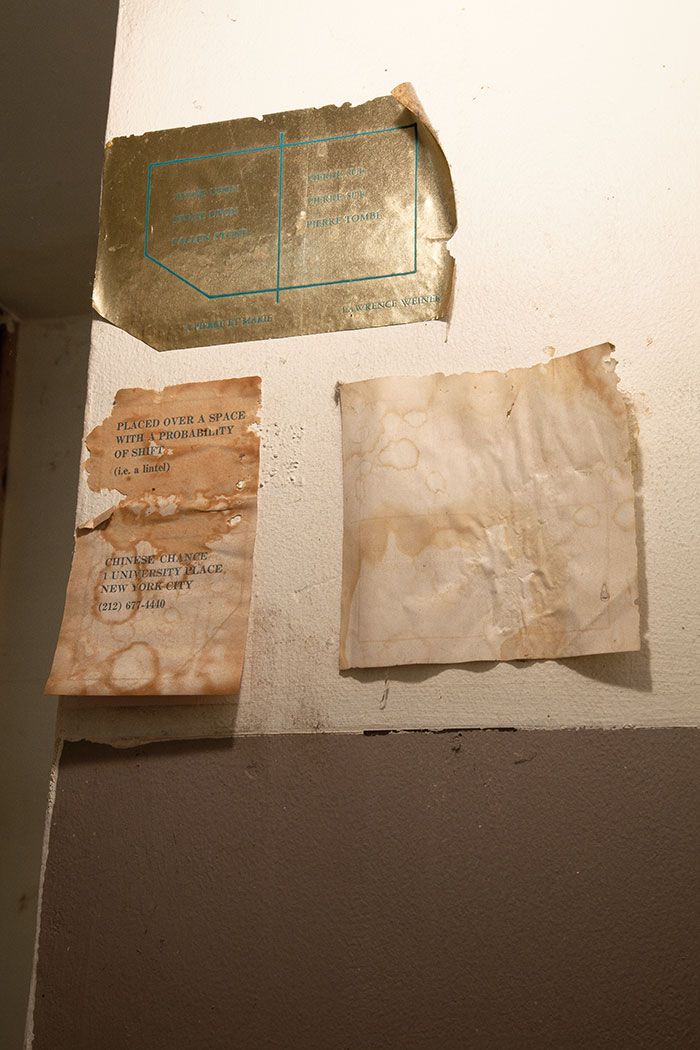
Saban still uses the darkroom built by Wegman in the early 1970s. ÔÇ£Everything is the same, even though IÔÇÖve been here for three years.ÔÇØ Candid photos of BaldessariÔÇÖs life, including images of his children, remained on the walls of the kitchen area. Baldessari, after vacating this studio and several others scattered throughout Los Angeles, had consolidated his practice into one large complex in Venice Beach. But a room at SabanÔÇÖs remained dedicated to part of his vast collection of magazines and newspapers ÔÇö research for his appropriation work using imagery from popular culture. Of the ephemera he left behind, Saban said, ÔÇ£He has a lot of different archives. ItÔÇÖs good for an extension to be kept for him here. ItÔÇÖs still his place, in a way ÔÇö everythingÔÇÖs the same. IÔÇÖm just trying to clean it a little over time,ÔÇØ she laughed. She explained how she works around her predecessorsÔÇÖ work spaces, respectfully keeping them intact.
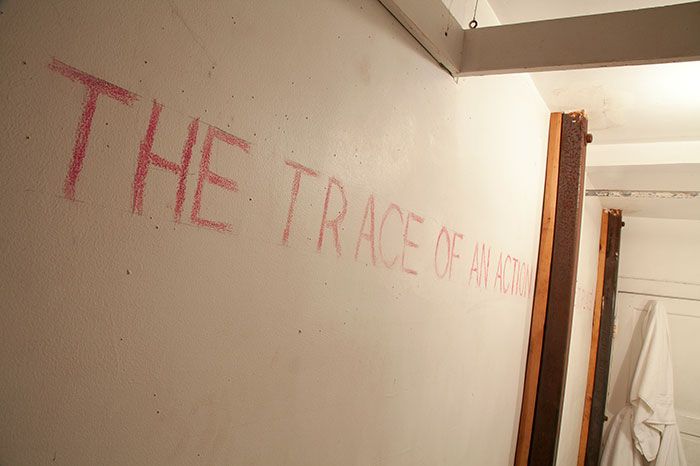
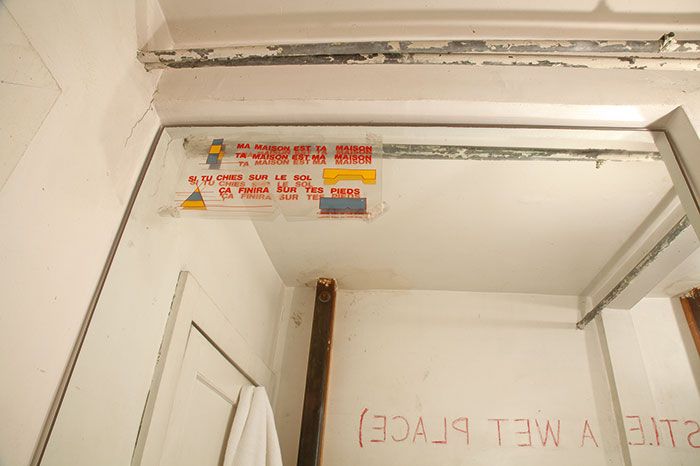
The washroom showed further traces of the studioÔÇÖs history. Inside, handwritten on the wall, was a 1986 text piece┬áLawrence Weiner had given to Baldessari that read:┬áTHE TRACE OF AN ACTION PAST (i.e.┬áA WET PLACE). Several Weiner stickers were adhered to the wall (STONE UPON STONE UPON FALLEN STONE / PIERRE SUR PIERRE SUR PIERRE TOMB├ë┬á[1983] and┬áPLACED OVER A SPACE WITH A PROBABILITY OF A SHIFT (i.e.┬áA LINTEL)┬á[1977]); and to the mirror (MA MAISON EST TA MAISON / TA MAISON EST MA MAISON┬á[1986]). Upon viewing the photos, Weiner remarked, ÔÇ£Over the years I have taken many a shower in that room, as John was a very gracious host.ÔÇØ
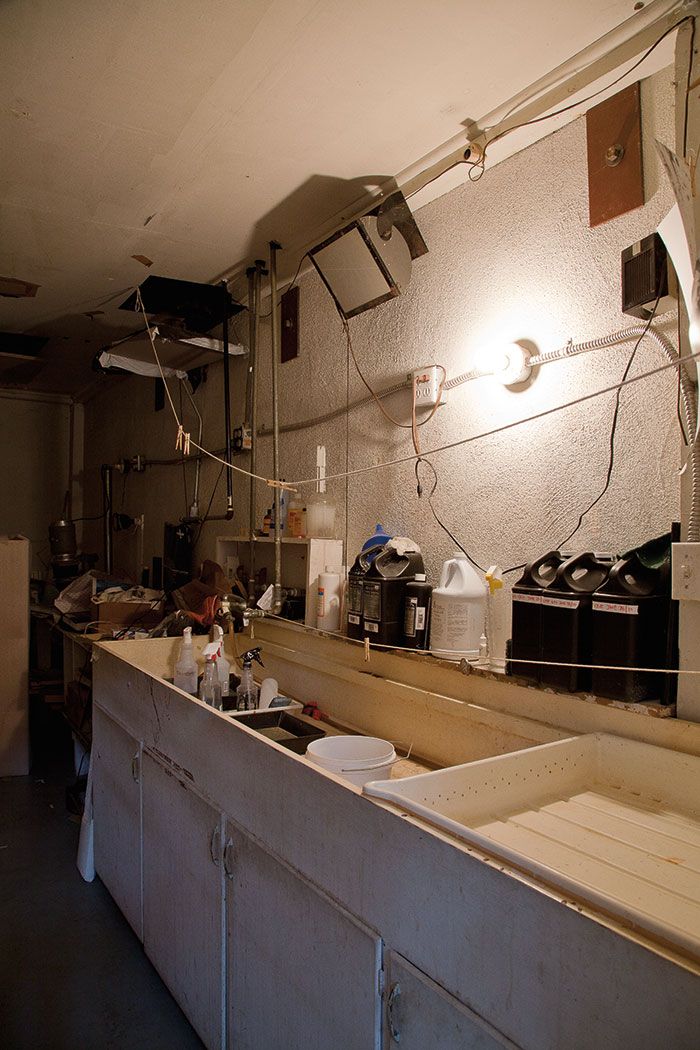
William Wegman had recently visited Saban at the studio and discovered she still had a chair he had used in many of his well-known video pieces. ÔÇ£He was really emotional about it,ÔÇØ said Saban. Shortly after his visit, she packed the chair, along with some images she had photographed of the studio, and shipped it to Wegman. The parcel happened to arrive on his birthday. When I returned to New York, I contacted┬áWegman to document the prodigal chairÔÇÖs return.
Excerpted with permission from┬áSTUDIO LIFE: Rituals, Collections, Tools, and Observations on the Artistic Process┬áby Sarah Trigg (Princeton Architectural Press, 2013). ┬® Sarah Trigg. All rights reserved. In 2009, Trigg, a visual artist,┬áembarked on an investigation within the United States, interviewing more than 200 artists in their studios. She met with a wide range of practitioners ÔÇö from painters to performance artists ÔÇö of various locations, backgrounds, and career stages to create a behind-the-scenes survey of artmaking today. Instead of focusing on artwork for the book,┬áTrigg asked her subjects to share examples from their practice that they considered to fall in the categories: mascots, collected objects, rituals, makeshift tools, residue, and habitats.


